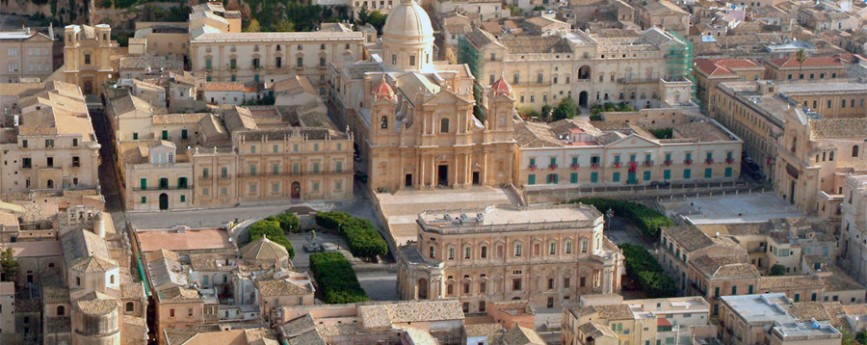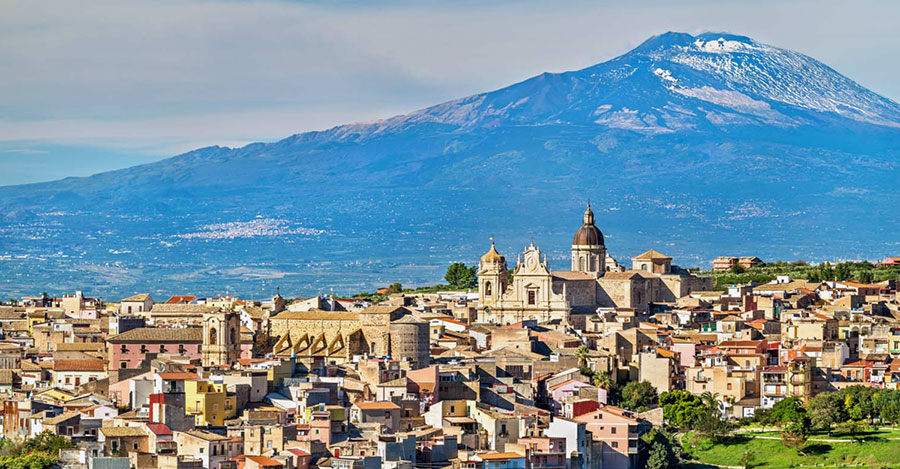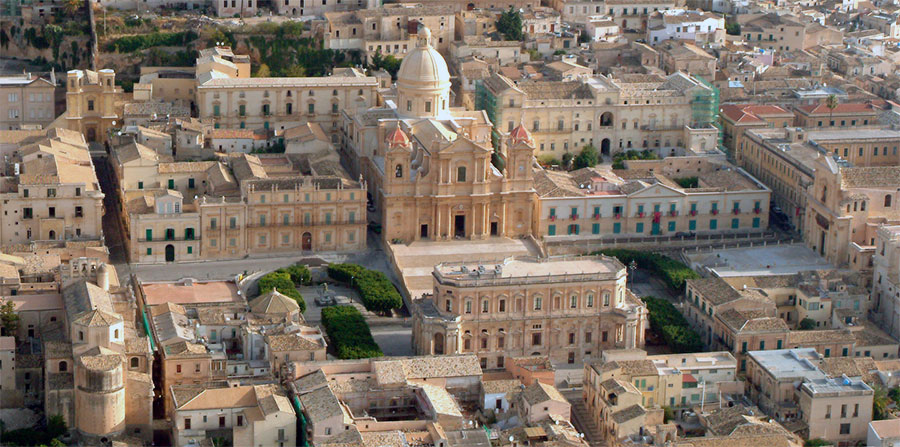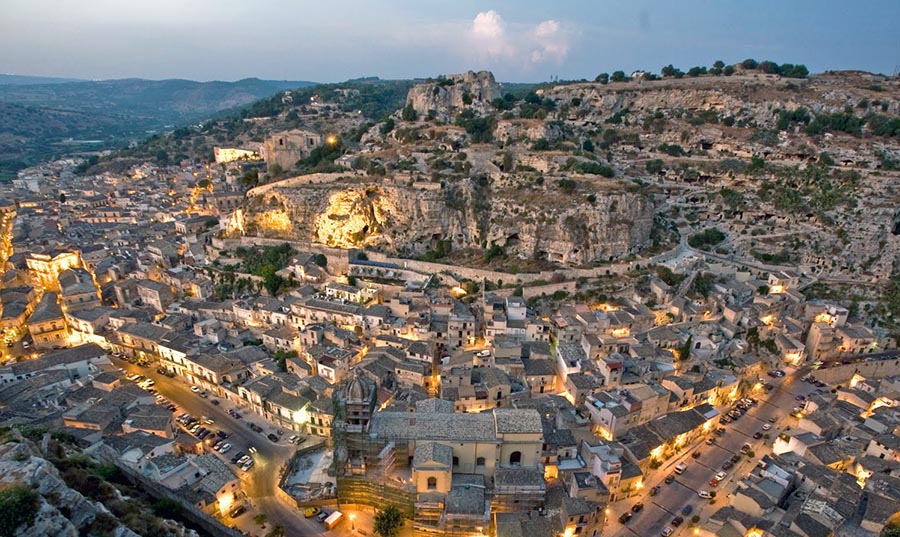Val di Noto is a collection of places to visit during your holidays in Sicily. Sea, culture, traditions and areas to explore in all their original splendor. To be part of the Val Di Noto are the cities of Caltagirone, Militello in the Val di Catania, Catania, Modica, Noto, Palazzolo, Ragusa and Scicli. Each of these cities holds an inestimable artistic and cultural value shown today in the world with pride. Since 2002 the Val di Noto is among the Italian sites of the UNESCO World Heritage List for its splendid baroque cities, pearls of the Mediterranean. The territory is included among the mountain ranges of the Iblei and Erei. The presence of many rivers and canyons makes the area quite complex geographically, consisting of sedimentary layers and prehistoric lava outcrops related to the phenomena of Iblean volcanism. The great geological instability that characterizes the Val di Noto makes the area at high seismic risk, as demonstrated by the great earthquakes of 1542 and 1693 that reduced many inhabited centers to rubble.
Caltagirone
Caltagirone is a real show! The rich architecture and the beauty of its facades characterize the spectacular churches like that of Santa Maria del Monte. The splendid staircase decorated with majolica features is famous all over the world and a tourist destination always present in the itineraries. To visit the church of San Giacomo Apostolo, the buildings of the Capitano Court and the Civic Museum. The natural vocation for ceramics has made it a pole of excellence, known internationally; the workers of the sixteenth-seventeenth and eighteenth centuries have evolved, embellishing the already high quality of a maximum tradition of art that does not fear comparisons.
Modica
Modica is located in the province of Ragusa and extends in the southern part of the Iblei Mountains, divided into Modica alta, with buildings that dig the rock, and Modica Bassa further down the valley. It is a city of immense beauty, expression of the Baroque in Sicily that amazes with houses that especially in the evening seem a real crib. The Cathedral of S. Giorgio, built in the eighteenth century, is similar to the church of S. Trinità dei Monti, both testimony to the mastery of man. The Cathedral of St. George is famous all over the world and is defined as the most beautiful example of the baroque of the Hyblean province.
Militello in Val di Catania
Militello in the Val di Catania was rebuilt in Baroque style after the earthquake of 1693 and proclaimed a UNESCO World Heritage Site. Militello summarizes history, culture and tradition. The city owes its fame to Johanna of Austria who turned it into a court and spent time bringing with it the taste for art and made it live a moment of maximum splendor. Palaces in Baroque style characterize the historical center, from the Benedictine Monastery, to the museum of S. Nicolò, from the Church of S. Maria alla Catena, to the Church of Maria SS. Della Stella, to the Church of S. Maria la Vetere. The local cuisine, tasty and sincere, is influenced by the strong influence of the seasonality of the products, and is hardly forgotten by tourists.
Catania
Catania was founded by the Greeks in 729 BC, has a rich history of cultural heritage of the Greek, Roman, Angevin, Aragonese, Spanish, Byzantine, Arab, Norman and Swabian. The city of today, mainly Baroque, is the result of reconstruction after the strong earthquake of 1693, declared a Unesco World Heritage Site in 2002. Drawing on the local stone and the lava mines, the monuments were built according to an alternation of black and white . The volcano Etna is undoubtedly one of the places to visit in Sicily is compulsory both in winter and summer thanks to the fantastic organized excursions. Culture, good food along with the fantastic sea of the Catania coast make Catania one of the most beautiful places to live during your holidays in Sicily.
Noto
Noto is undoubtedly the most important Sicilian, Roman, Byzantine and then Arab center of Sicily. It was destroyed in its full splendor by the earthquake of 1693, but thanks to the skilful reconstruction in the Baroque style, it is today a divine city of art, Unesco heritage, a popular destination for tourists from all over the world. Noto is a true European capital of the Baroque: palaces, churches, monasteries, squares and fountains are presented in succession as a theatrical stage that leaves breathless. Definitely, the most beautiful kilometer of Baroque art in Europe. Absolutely to mention is Piazza Immacolata, preceded by an impressive staircase, which culminates in a terrace bordered by the homonymous convent. For nature lovers we recommend a trip to the surrounding areas of Pantalica and ancient Noto.
Palazzolo Acreide
In the city of Palazzolo we find a Greek theater, the Bouleuterion, numerous votive shrines, necropolis, imposing churches; in short, everything that is present in a capital of culture. It has been expertly rebuilt after the earthquake becoming the highest expression of Sicilian baroque, whose art is visible today in the churches of San Paolo, San Sebastiano and the SS. Annunziata. Behind the theater are the remains of the Temple of Aphrodite, in the South-East the latomies of the Incagliata and Intagliatella, initially used as stone quarries for the construction of the ancient Akrai, later became burial sites. The Anapo Valley, across the Anapo River, is a landscape paradise to be seen at least once in your life.
Ragusa e Ibla
Ragusa and Ragusa Ibla seem in fact two cities, even if it is not so. The first represents the new, modern and smooth, organized and commercial city. The second is more intimate, more characteristic, and is the one that most tourists hunt for. Ragusa is a city of the Baroque par excellence, also destroyed by the earthquake of 1693 and then rebuilt by the architect Gagliardi. From above the landscape dominates the Basilica of San Giorgio, strictly in Baroque style. It is the most impressive and undisputed jewel of the Sicilian baroque. Preceded by a spacious staircase, the church was finished at the end of the eighteenth century after almost forty years since the beginning of the works. The Ragusa cuisine is certainly among the most appreciated of Sicily in the world.
Scicli
Scicli lies on the sides of high rocky hills, rebuilt in Baroque style after the earthquake of 1693. The mother church is dedicated to the Madonna delle Milizie, inside which the homonymous works in papier-mâché are displayed, representing the fight against the Saracens. In the same square stands the Church of San Bartolomeo, dating back to the fifteenth century that was the only one to resist the earthquake of 1693. The initial visual impact of the country can not help but leave anyone speechless: we seem to be in front of a meticulous and successful project of organic architecture.














